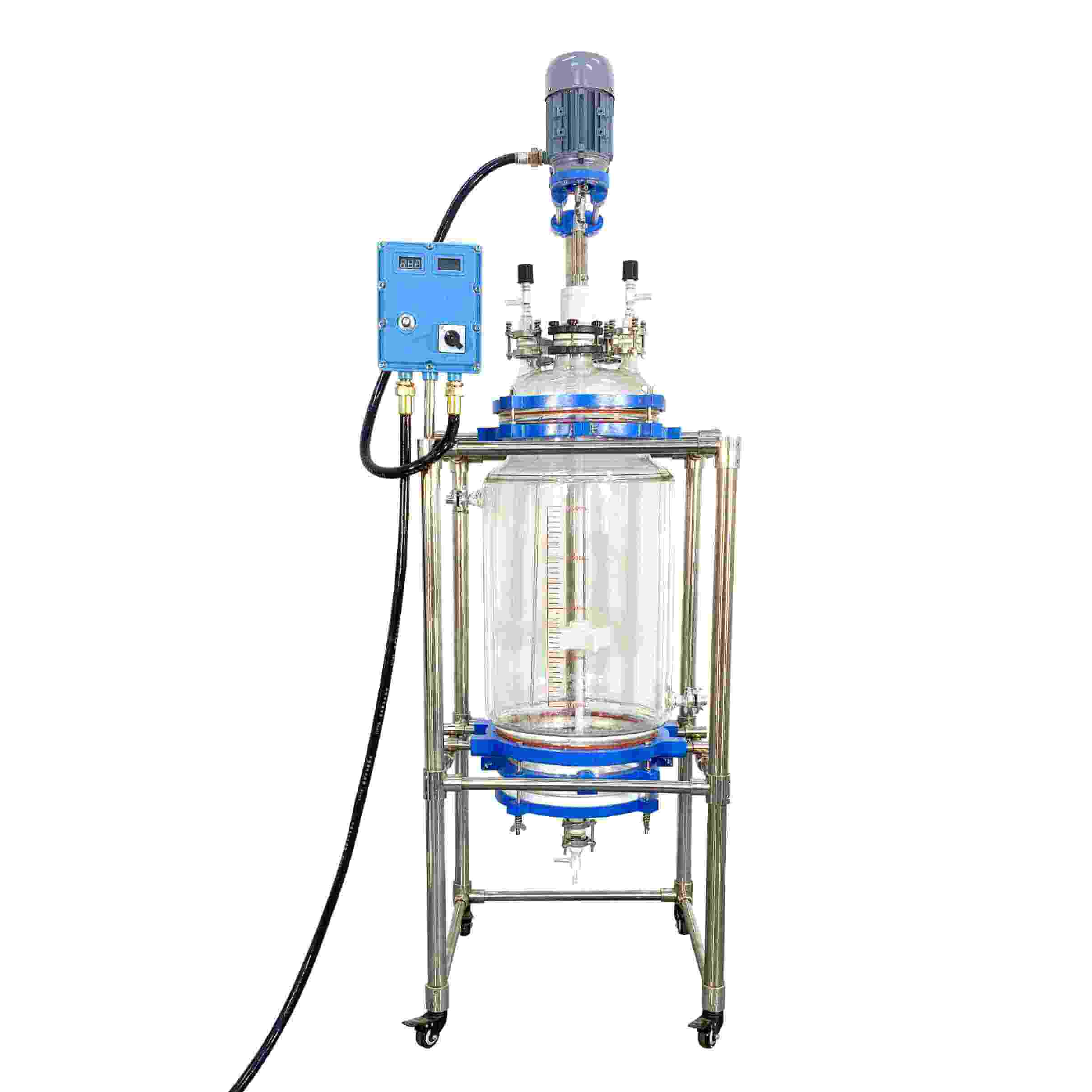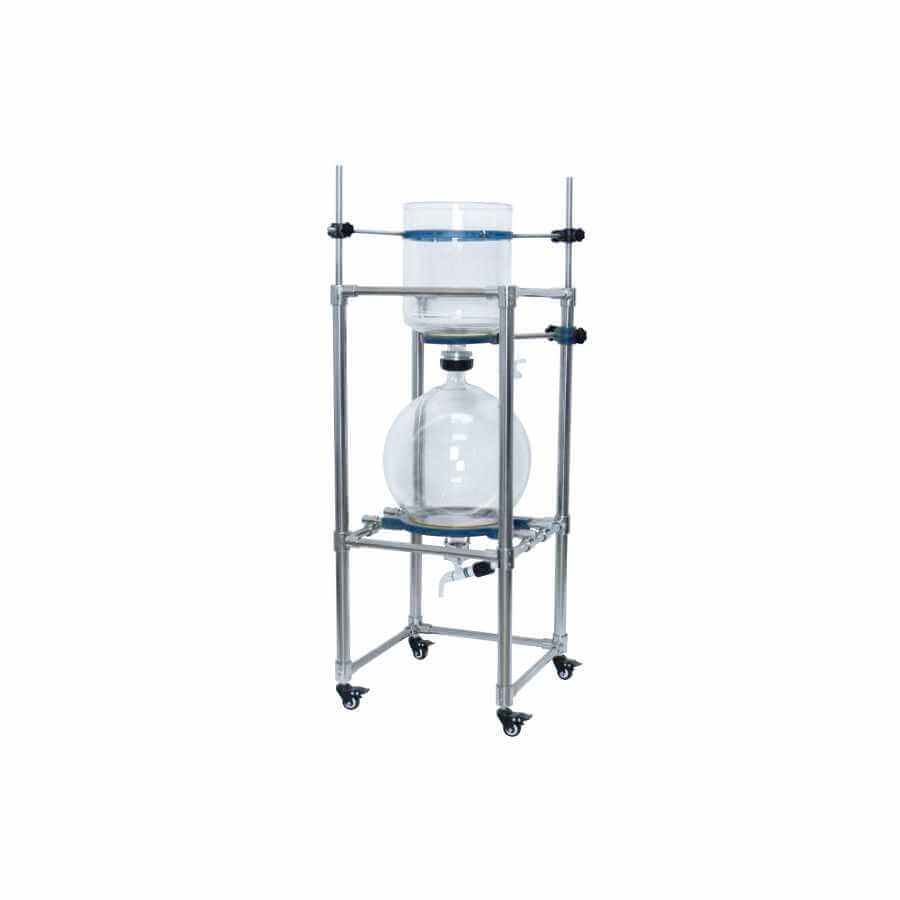

Glass Reactor
Glass reactors: used in chemical reactions, drug research and development, fine chemicals, food manufacturing, and other fields.
Material
glass
Capacity (L)
10-10000+
Mixing system
anchor, paddle, frame and others
Heating system
electric heating, oil heating and others
RUNGYU glass reactors are commonly used biochemical instruments and are widely used in modern fine chemicals, biopharmaceuticals, scientific research and experiments, and other industries. They can be used for concentration, distillation, reflux, separation, and purification reactions under the conditions of constant speed, constant force, and constant temperature. It is an ideal equipment for teaching, experiment, pilot test, and production.
Request a quoteWhen controlling the cooling and heating temperature of the glass reactor, the matching circulation device will control the temperature and can perfectly reach the expected set temperature range. This process will produce certain chemical reactions and is susceptible to external influences. Therefore, the requirements for glass reactor experiments or work are very high, that is, the placement environment of high and low-temperature devices is more important. Here, RUNGYU recommends choosing a ventilated and cool room for placement.

For glass reactors equipped with refrigeration and heating cycle devices, a series of exothermic and endothermic reactions are prone to occur during the polymerization reaction. During the chemical reaction, it is recommended that the surrounding operators do not get too close to avoid certain troubles. During the reaction process, if the heat is not removed in time, the reaction pressure will be affected. If the pressure is too high, the entire reaction can be dangerous.
The refrigeration and heating cycle device can be used with glass reactors of different sizes for refrigeration and heating temperature control. Since glass reactors of different sizes bring different heat capacities, their ability to absorb or release heat is also different. Therefore, it is necessary to provide accurate glass reactor size, temperature requirements, material, and other working conditions to select a model to avoid the model being too large or too small, causing the equipment to fail to meet the expected temperature requirements. A high and low-temperature host can control one or more glass reactors at the same time. It is a large-scale system device with integrated temperature control, which can be produced according to the requirements of working conditions.
The temperature control of the glass reactor is based on the temperature change of the heat transfer oil in the jacket of the glass reactor to control the temperature inside the kettle. The more heat transfer media in the system, the less effective power is used in the kettle, and the slower the temperature rises and falls. When a low-temperature reaction occurs, the surface temperature of the grooved oil bath is very low, and it is easy to absorb water vapor in the air and freeze on the surface of the coil evaporator. Ice is a heat insulator, and the surface of the coil evaporator cannot conduct heat. Therefore, the compressor cannot cool the heat transfer medium and cannot reduce the temperature inside the kettle. When a high-temperature reaction occurs, the thermal oil will evaporate into the laboratory air and condense on the furniture surface, blocking the fume hood filter. Since the flash points of thermal oils are different, some may cause combustion and explosion. Thermal oils can only be used during flash evaporation. It is used at temperatures below 5 degrees, so the operating temperature range of the thermal oil is relatively limited, and the thermal oil needs to be replaced regularly.




